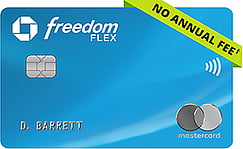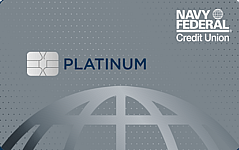11 Best Balance Transfer Credit Cards of April 2025
Updated on April 11, 2025+ 2 more+ 2 more
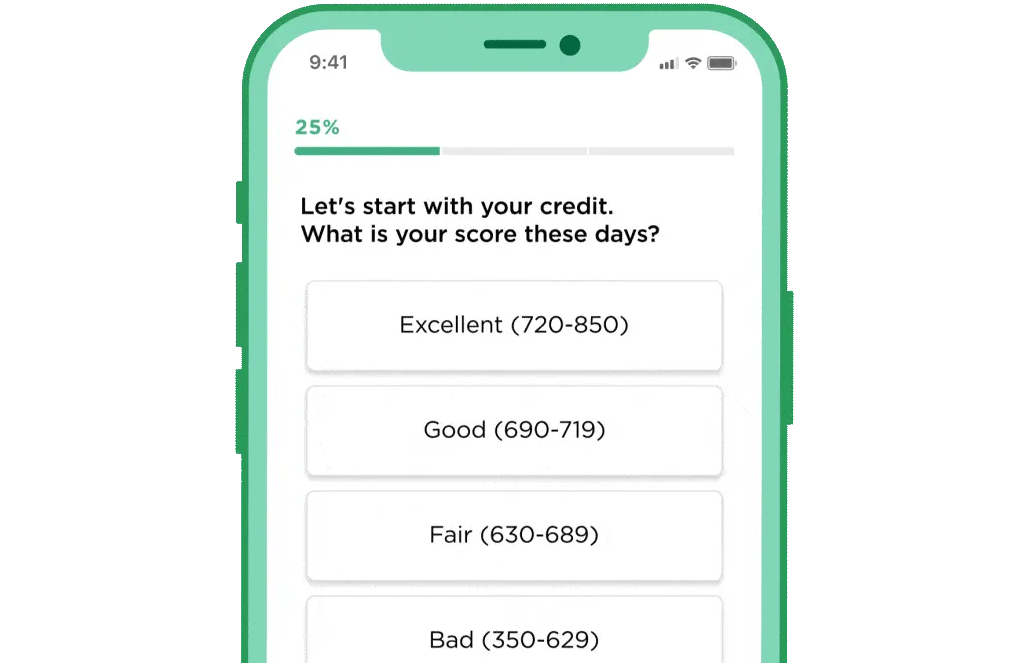
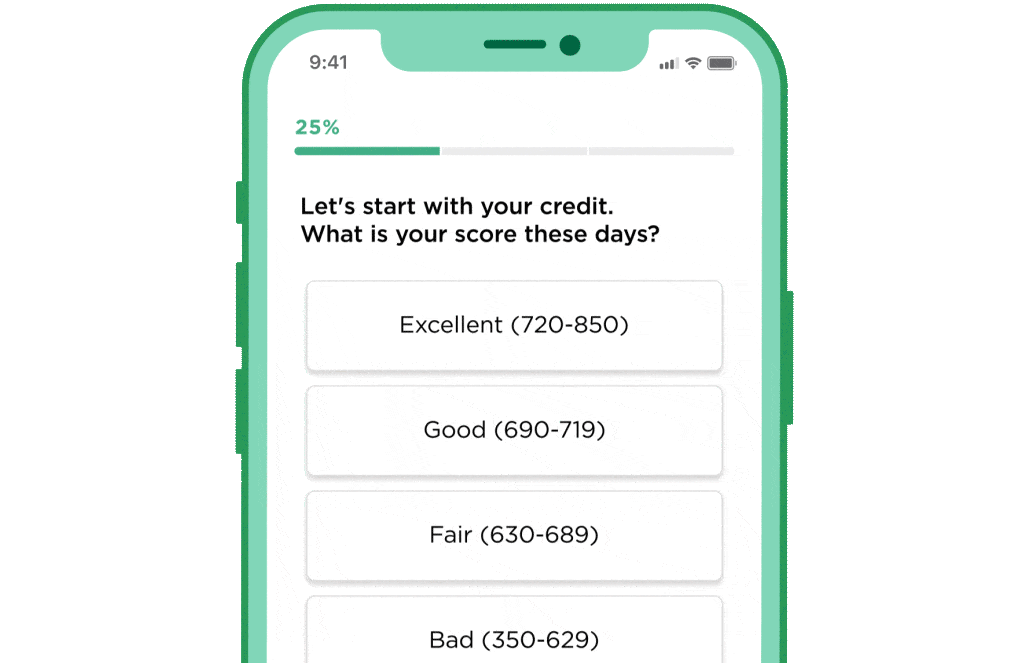
Answer a few quick questions, and we'll match you with your top credit cards. Or, keep scrolling to browse our best balance transfer cards.
TAKE THE QUIZ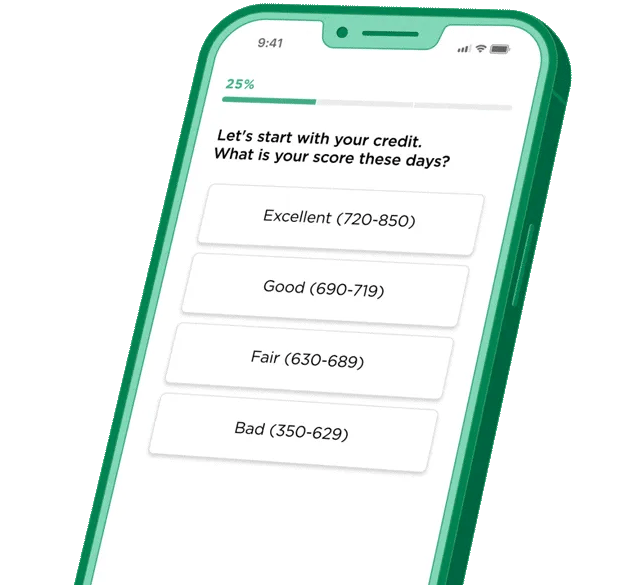
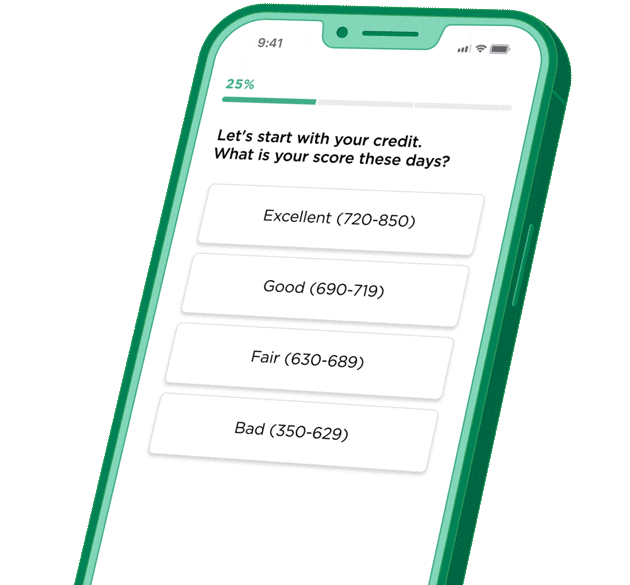
Why trust NerdWallet
Why trust NerdWallet
400+ credit cards reviewed by our team of experts (See our top picks)
80+ years of combined experience covering credit cards and personal finance
27,000+ hours spent researching and reviewing financial products in the last 12 months
Objective comprehensive ratings rubrics (Methodology)
NerdWallet's credit cards content, including ratings and recommendations, is overseen by a team of writers and editors who specialize in credit cards. Their work has appeared in The Associated Press, USA Today, The New York Times, MarketWatch, MSN, NBC's "Today," ABC's "Good Morning America" and many other national, regional and local media outlets. Each writer and editor follows NerdWallet's strict guidelines for editorial integrity.
App store reviews
4.8 out of 5
based on 116.5K ratings
Best Balance Transfer Credit Cards
The best balance transfer credit cards charge no annual fee and offer at least 15 months of 0% APR for balance transfers. Using a balance transfer card wisely can save you hundreds, or even thousands, of dollars in interest and help you get out of debt faster.
The best balance transfer credit cards charge no annual fee and offer at least 15 months of 0% APR for balance transfers. Using a balance transfer card wisely can save you hundreds, or even thousands, of dollars in interest and help you get out of debt faster.
Show More
The best balance transfer credit cards charge no annual fee and offer at least 15 months of 0% APR for balance transfers. Using a balance transfer card wisely can save you hundreds, or even thousands, of dollars in interest and help you get out of debt faster.
The best balance transfer credit cards charge no annual fee and offer at least 15 months of 0% APR for balance transfers. Using a balance transfer card wisely can save you hundreds, or even thousands, of dollars in interest and help you get out of debt faster.
NerdWallet's Best Balance Transfer Credit Cards of April 2025
Wells Fargo Reflect® Card: Best for Longest intro period for transfers & purchases
Citi Simplicity® Card: Best for Extra-long intro period + no late fees
Citi® Diamond Preferred® Card: Best for Extra-long balance transfer offer
Discover it® Cash Back - 18 Month Intro Balance Transfer Offer: Best for Long intro period + quarterly categories
Navy Federal Credit Union® Platinum Credit Card: Best for Military
Discover it® Chrome: Best for Long intro period + gas and dining rewards
Citi Double Cash® Card: Best for 2% cash back
Chase Freedom Unlimited®: Best for All-around cash back
Chase Freedom Flex®: Best for Quarterly cash back categories
Capital One Savor Cash Rewards Credit Card: Best for Bonus cash back
U.S. Bank Shield™ Visa® Card: Best for Long intro period + side perks
Show SummaryHide Summary
| Credit card | NerdWallet rating | Intro APR | Regular APR | Rewards rate | Learn more |
|---|---|---|---|---|---|
Apply Now on Discover's website, on Discover's website, or call 800-347-0264 | Best for Long intro period + quarterly categories | 0% intro APR on Purchases for 6 months and 0% intro APR on Balance Transfers for 18 months | 18.24%-27.24% Variable APR | 1%-5% | Apply Now on Discover's website, on Discover's website, or call 800-347-0264 |
Apply Now on Wells Fargo's website on Wells Fargo's website | Best for Longest intro period for transfers & purchases | 0% intro APR for 21 months from account opening on purchases and qualifying balance transfers | 17.24%, 23.74%, or 28.99% Variable APR | N/A | Apply Now on Wells Fargo's website on Wells Fargo's website |
Apply Now on Chase's website on Chase's website | Best for All-around cash back | 0% intro APR on purchases and Balance Transfers for 15 months | 18.99%-28.49% Variable APR | 1.5%-5% | Apply Now on Chase's website on Chase's website |
Apply Now on U.S. Bank's website on U.S. Bank's website | Best for Long intro period + side perks | 0% intro APR for 18 billing cycles on purchases and balance transfers | 17.74%-28.74% Variable APR | 4% | Apply Now on U.S. Bank's website on U.S. Bank's website |
Apply Now on Citibank's application on Citibank's application | Best for 2% cash back | 0% intro APR on balance transfers for 18 months | 18.24%-28.24% Variable APR | 1%-5% | Apply Now on Citibank's application on Citibank's application |
Apply Now on Citibank's application on Citibank's application | Best for Extra-long intro period + no late fees | 0% intro APR on purchases for 12 months and 0% intro APR on balance transfers for 21 months | 18.24%-28.99% Variable APR | N/A | Apply Now on Citibank's application on Citibank's application |
Apply Now on Discover's website, on Discover's website, or call 800-347-0264 | Best for Long intro period + gas and dining rewards | 0% intro APR on Purchases for 6 months and 0% intro APR on Balance Transfers for 18 months | 18.24%-27.24% Variable APR | 1%-2% | Apply Now on Discover's website, on Discover's website, or call 800-347-0264 |
Apply Now on Citibank's application on Citibank's application | Best for Extra-long balance transfer offer | 0% intro APR on purchases for 12 months and 0% intro APR on balance transfers for 21 months | 17.24%-27.99% Variable APR | N/A | Apply Now on Citibank's application on Citibank's application |
Apply Now on Chase's website on Chase's website | Best for Quarterly cash back categories | 0% intro APR on purchases and Balance Transfers for 15 months | 18.99%-28.49% Variable APR | 1%-5% | Apply Now on Chase's website on Chase's website |
Apply Now on Capital One's website on Capital One's website | Best for Bonus cash back | 0% intro APR for 15 months on purchases and balance transfers; balance transfer fee applies | 19.24%-29.24% Variable APR | 1%-8% | Apply Now on Capital One's website on Capital One's website |
| Best for Military | 0.99% intro APR for 12 months from account opening on balance transfers made within the first 60 days | 10.99%-18.00%, Variable APR | N/A |

Find the right credit card for you.
Whether you want to pay less interest or earn more rewards, the right card's out there. Just answer a few questions and we'll narrow the search for you.
Whether you want to pay less interest or earn more rewards, the right card's out there. Just answer a few questions and we'll narrow the search for you.
Our pick for: Long intro period + quarterly categories
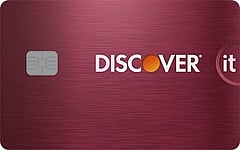
- INTRO OFFER: Unlimited Cashback Match for all new cardmembers – only from Discover. Discover will automatically match all the cash back you’ve earned at the end of your first year! There’s no minimum spending or maximum rewards. You could turn $150 cash back into $300.
- Earn 5% Cashback Bonus® at Grocery Stores and Wholesale Clubs, April 1 through June 30, 2025, on up to $1,500 in purchases, when you activate. Plus, earn unlimited 1% cash back on all other purchases.
- Redeem your rewards for cash at any time.
- Apply and you could get a decision in as little as 60 seconds. No annual fee.
- Start shopping and earning rewards in minutes with our digital card, before your physical card arrives in the mail, if eligible.
- Discover could help you reduce exposure of your personal information online by helping you remove it from select people-search sites that could sell your data. Activate by mobile app for free.
- Get a 0% intro APR for 18 months on balance transfers. Then 18.24% to 27.24% Standard Variable APR applies, based on credit worthiness.
- Terms and conditions apply.
- View Rates & Fees
Most balance-transfer cards don't give you much of a reason to hold onto them after the 0% period ends. The Discover it® Cash Back - 18 Month Intro Balance Transfer Offer is a noteworthy exception. Get it for the balance-transfer benefits, keep it for the cash-back rewards.
The introductory APR period for balance transfers is outstanding for a card that also has a robust rewards program.
There's a relatively low 3% introductory balance transfer fee, although the fee for future transfers is up to 5% (see terms).
$0 annual fee.
Rewards: 5% cash back in rotating categories that you activate, on up to $1,500 in category spending each quarter, and 1% on other purchases.
Discover matches the cash back you earn in your first year — although ideally in that first year you'll be focused more on paying down balances than adding to them.
The 0% period on purchases is considerably shorter than that for balance transfers, so it's best to avoid putting purchases on the card until you've paid off transferred debt.
When it comes to rewards, the activation requirement for bonus categories can be a hassle.
Our pick for: Longest intro period for transfers & purchases
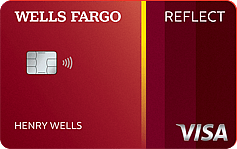
- Apply Now to take advantage of this offer and learn more about product features, terms and conditions.
- 0% intro APR for 21 months from account opening on purchases and qualifying balance transfers. 17.24%, 23.74%, or 28.99% Variable APR thereafter; balance transfers made within 120 days qualify for the intro rate, BT fee of 5%, min: $5.
- $0 annual fee.
- Up to $600 of cell phone protection against damage or theft. Subject to a $25 deductible.
- Through My Wells Fargo Deals, you can get access to personalized deals from a variety of merchants. It's an easy way to earn cash back as an account credit when you shop, dine, or enjoy an experience simply by using an eligible Wells Fargo credit card.
- View Rates & Fees
If you're looking for breathing room to pay down debt, the Wells Fargo Reflect® Card boasts an intro APR period that's close to two years.
The intro APR period for both balance transfers and purchases is among the longest available on a card from a major issuer.
$0 annual fee.
The card also offers cell phone insurance.
The balance transfer fee of 5% (minimum $5) is on the high end for cards in its class.
The card doesn't earn ongoing rewards on everyday spending, so its value is limited after the intro period ends.
Our pick for: All-around cash back

- Limited Time Intro Offer: Earn a $250 Bonus after you spend $500 on purchases in your first 3 months from account opening
- Enjoy 5% cash back on travel purchased through Chase Travel℠, our premier rewards program that lets you redeem rewards for cash back, travel, gift cards and more; 3% cash back on drugstore purchases and dining at restaurants, including takeout and eligible delivery service, and 1.5% on all other purchases.
- No minimum to redeem for cash back. You can choose to receive a statement credit or direct deposit into most U.S. checking and savings accounts. Cash Back rewards do not expire as long as your account is open!
- Enjoy 0% Intro APR for 15 months from account opening on purchases and balance transfers, then a variable APR of 18.99% - 28.49%.
- No annual fee – You won't have to pay an annual fee for all the great features that come with your Freedom Unlimited® card
- Keep tabs on your credit health, Chase Credit Journey helps you monitor your credit with free access to your latest score, alerts, and more.
- Member FDIC
- View Rates & Fees
The Chase Freedom Unlimited® earns 5 stars for its generous cash-back rewards. Look a little closer, though, and you'll see it also offers a solid 0% intro APR period for balance transfers.
The intro APR period isn't as long as you'd get on a dedicated 0% card, but the rewards and other benefits make this a solid option with significant long-term value.
Relatively low intro balance transfer fee: 3% or $5, whichever is greater, in the first 60 days; 5% or $5, whichever is greater, after that.
You earn 1.5% cash back on most purchases, plus 5% on travel booked through Chase and 3% at drugstores and restaurants. There's an attractive bonus offer for new cardholders, too.
$0 annual fee.
You can get a longer 0% period on transfers with other cards, including a couple that also earn cash back.
Our pick for: Long intro period + side perks
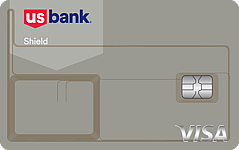
- 0% intro APR on purchases and balance transfers for 18 billing cycles. After that, a variable APR currently 17.74% - 28.74%.
- 4% cash back on prepaid air, hotel and car reservations booked directly in the Rewards Center when you use your card.
- Get a $20 annual statement credit for 11 consecutive months of purchases.
- No annual fee.
- Cell Phone Protection: Your eligible cell phone can be reimbursed up to $600 in the event it is stolen or damaged when you pay your monthly cell phone bill with your card.
- Terms and conditions apply.
- View Rates & Fees
The U.S. Bank Shield™ Visa® Card is ideal for financing a large purchase or zapping existing debt, and it even comes with a few extra goodies.
This card offers a lengthy break from interest, as well as some reasons to keep it around long term:
Low introductory transfer fee: Either 3% of the amount of each transfer or $5 minimum, whichever is greater. Balance transfers must be made within 60 days of account opening. (This offer may differ if you apply directly via U.S. Bank.)
The card earns 4% cash back on prepaid air, hotel and car reservations booked directly in U.S. Bank’s Rewards Center. You can also earn a modest statement credit each year with qualifying purchases, and you'll get cell phone insurance when you use the card to pay your cell bill.
$0 annual fee.
It's possible to find lengthier intro APR offers, even on U.S. Bank's own website. And if you're willing to accept a slightly shorter intro APR window, you can find cards with superior rewards.
Our pick for: 2% cash back

- Earn $200 cash back after you spend $1,500 on purchases in the first 6 months of account opening. This bonus offer will be fulfilled as 20,000 ThankYou® Points, which can be redeemed for $200 cash back.
- Earn 2% on every purchase with unlimited 1% cash back when you buy, plus an additional 1% as you pay for those purchases. To earn cash back, pay at least the minimum due on time. Plus, a special travel offer, earn 5% total cash back on hotel, car rentals and attractions booked on the Citi Travel℠ portal through 12/31/25.
- Balance Transfer Only Offer: 0% intro APR on Balance Transfers for 18 months. After that, the variable APR will be 18.24% - 28.24%, based on your creditworthiness.
- Balance Transfers do not earn cash back. Intro APR does not apply to purchases.
- If you transfer a balance, interest will be charged on your purchases unless you pay your entire balance (including balance transfers) by the due date each month.
- There is an intro balance transfer fee of 3% of each transfer (minimum $5) completed within the first 4 months of account opening. After that, your fee will be 5% of each transfer (minimum $5).
- View Rates & Fees
The Citi Double Cash® Card is renowned for its cash-back rewards. Scroll down the page when you go to apply for the card, and you'll discover that it comes with a terrific balance-transfer offer, too.
As a balance-transfer card, there's a lot to like, including a lengthy introductory period for transfers.
Low intro balance transfer fee: 3% or $5, whichever is greater, in the first four months; 5% or $5, whichever is greater, after that.
The card has tremendous ongoing value. It earns 2% cash back on all purchases — 1% when you buy something and 1% when you pay it off.
There's also a bonus offer, although if you're trying to get out of debt, it's best to focus on paying down your balances, not adding to them.
$0 annual fee.
There's no 0% period for purchases. That means if you transfer a balance onto this card, you'll get no grace period, and you'll be paying interest on purchases right away. Your best move is to pay off the transferred debt first, then start using this card for the rewards.
Our pick for: Extra-long intro period + no late fees

- No Late Fees, No Penalty Rate, and No Annual Fee... Ever
- 0% Intro APR for 21 months on balance transfers and for 12 months on purchases; after that, the variable APR will be 18.24% - 28.99%, based on your creditworthiness. Balance transfers must be completed within 4 months of account opening.
- There is an intro balance transfer fee of 3% of each transfer (minimum $5) completed within the first 4 months of account opening. After that, your fee will be 5% of each transfer (minimum $5).
- Stay protected with Citi® Quick Lock
- View Rates & Fees
The Citi Simplicity® Card brings it with an extra-long 0% intro APR period for balance transfers — and you'll never pay late fees or a penalty APR.
The intro APR period for balance transfers is this card's primary selling point, closing in on two years.
There's a relatively low introductory balance transfer fee: 3% or $5, whichever is greater, in the first four months. After that, the fee is 5% or $5, whichever is greater.
The absence of late fees is a benefit for the absent-minded, although you don't want to get in the habit of paying bills late. Other lenders aren't as forgiving, and chronic lateness can kill your credit scores.
$0 annual fee.
Because it doesn't earn rewards, there's not a lot of ongoing value to the card once that 0% period runs out.
The 0% period for purchases is shorter than for transfers, so while it's not a bad card for purchases, it's not ideal, either.
Our pick for: Long intro period + gas and dining rewards

- INTRO OFFER: Unlimited Cashback Match for all new cardmembers–only from Discover. Discover will automatically match all the cash back you’ve earned at the end of your first year! There’s no minimum spending or maximum rewards.
- Earn 2% cash back at Gas Stations and Restaurants on up to $1,000 in combined purchases each quarter, automatically. Plus earn unlimited 1% cash back on all other purchases.
- Get a 0% intro APR for 18 months on balance transfers. Then 18.24% to 27.24% Standard Variable APR applies, based on credit worthiness.
- Redeem your rewards for cash at any time.
- Discover could help you reduce exposure of your personal information online by helping you remove it from select people-search sites that could sell your data. Activate by mobile app for free.
- No annual fee.
- Terms and conditions apply.
- View Rates & Fees
The rewards on the Discover it® Chrome aren't especially strong compared with other cash back cards, but the introductory APR period stands out for those looking to transfer a balance.
The introductory APR period on balance transfers is excellent for a rewards credit card. Most cash back cards with balance transfer offers are in the 12- to 15-month range.
There's a relatively low 3% introductory balance transfer fee. However, for future transfers, the fee is up to 5% (see terms).
Rewards: This card pays 2% cash back at restaurants and gas stations, on up to $1,000 in purchases each quarter; other purchases earn 1%.
This card has a bonus offer as well.
$0 annual fee.
The 0% period on purchases is considerably shorter than that for balance transfers, so it's best to avoid putting purchases on the card until you've paid off transferred debt.
Our pick for: Extra-long balance transfer offer

- 0% Intro APR for 21 months on balance transfers and for 12 months on purchases; after that, the variable APR will be 17.24% - 27.99%, based on your creditworthiness. Balance transfers must be completed within 4 months of account opening.
- There is a balance transfer fee of either $5 or 5% of the amount of each transfer, whichever is greater
- Get free access to your FICO® Score online.
- With Citi Entertainment®, get special access to purchase tickets to thousands of events, including concerts, sporting events, dining experiences and more.
- No Annual Fee - our low intro rates and all the benefits don’t come with a yearly charge.
- View Rates & Fees
The Citi® Diamond Preferred® Card is all about the long 0% intro APR period. It's about as much breathing room as you'll find anywhere for transferring debt.
The long intro period for transfers is this card's defining feature, giving you more than a year and a half to whittle down debt.
$0 annual fee.
The 5% balance transfer fee (minimum $5) is on the high end.
The card doesn't earn rewards, so there's limited long-term value.
The intro APR period for purchases is shorter than for transfers.
Our pick for: Quarterly cash back categories
- Earn a $200 Bonus after you spend $500 on purchases in your first 3 months from account opening
- 5% cash back on up to $1,500 in combined purchases in bonus categories each quarter you activate. Enjoy new 5% categories each quarter!
- 5% cash back on travel purchased through Chase Travel℠, our premier rewards program that lets you redeem rewards for cash back, travel, gift cards and more
- 3% cash back on drugstore purchases and dining at restaurants, including takeout and eligible delivery service, and unlimited 1% cash back on all other purchases.
- No minimum to redeem for cash back. You can choose to receive a statement credit or direct deposit into most U.S. checking and savings accounts. Cash Back rewards do not expire as long as your account is open!
- 0% Intro APR for 15 months from account opening on purchases and balance transfers, then a variable APR of 18.99%-28.49%.
- No annual fee – You won't have to pay an annual fee for all the great features that come with your Freedom Flex® card
- Keep tabs on your credit health - Chase Credit Journey helps you monitor your credit with free access to your latest score, real-time alerts, and more.
- Member FDIC
- View Rates & Fees
With a solid 0% intro APR offer for balance transfers, the Chase Freedom Flex® is more than a 5-star rewards card — although its inviting combination of bonus categories and generous sign-up offer have made it a perennial favorite for cash back.
Like its sibling, the Chase Freedom Unlimited®, this card doesn't have the longest 0% APR period for transfers, but there's such strong long-term value that it's worth considering.
Relatively low intro balance transfer fee: 3% or $5, whichever is greater, in the first 60 days; 5% or $5, whichever is greater, after that.
The card offers bonus cash back of 3% to 5% on certain travel, at restaurants and drugstores, and in categories that change each quarter. Other spending earns 1% cash back. New cardholders can earn a strong bonus, too.
$0 annual fee.
You can get a longer 0% period on transfers with other cards, including a couple that also earn cash back.
The rotating quarterly 5% cash back categories give this card a lot of its appeal, but they do require some work, since you have to opt into them every three months.
Our pick for: Bonus cash back

- Earn a one-time $200 cash bonus once you spend $500 on purchases within the first 3 months from account opening
- Earn unlimited 3% cash back at grocery stores (excluding superstores like Walmart® and Target®), on dining, entertainment and popular streaming services, plus 1% on all other purchases
- Earn 8% cash back on Capital One Entertainment purchases
- Earn unlimited 5% cash back on hotels and rental cars booked through Capital One Travel, where you'll get Capital One's best prices on thousands of trip options. Terms apply
- No rotating categories or sign-ups needed to earn cash rewards; plus cash back won't expire for the life of the account and there's no limit to how much you can earn
- 0% intro APR on purchases and balance transfers for 15 months; 19.24% - 29.24% variable APR after that; balance transfer fee applies
- No foreign transaction fee
- No annual fee
- View Rates & Fees
The Capital One Savor Cash Rewards Credit Card earns 5 stars as the rare cash back credit card that rewards you for both going out and staying in. But it also comes with a strong balance transfer offer.
Although the intro APR period isn’t as long as what you can find on dedicated balance-transfer cards, it’s still well over a year. And the rewards give this card long-term value that those cards can’t match.
Relatively low intro transfer fee of 3% on balances transferred in the first 12 months your account is open. (See terms for transfers after 12 months.)
You earn unlimited 3% cash back at grocery stores, on dining and on entertainment and popular streaming services; other purchases earn 1%. There’s an attractive bonus offer, too.
$0 annual fee.
You can get a longer 0% period on transfers with other cards, including a couple that also earn cash back.
Our pick for: Military
ON THIS PAGE
Who can qualify for a balance transfer credit card?
NerdWallet readers usually land on this page because they’ve concluded that a balance transfer is a good move, and now they’re just looking for the right balance transfer credit card. Below, we’ll go into detail on how to choose among your options. But first, it’s worth quickly reviewing your situation to ensure you don’t apply for a card just to get met with a rejection.

Generally speaking, you’ll need good to excellent credit to be approved for a balance transfer credit card. That’s roughly defined as a credit score of 690 or better. But credit scores alone don’t guarantee approval for any card. Other factors include your income and your other debts. Because of this, people with credit scores above 800 can (and do) get rejected for balance transfer cards. And people with scores below 690 can (and do) get approved. We took a look at approval rates for credit cards on this page among people who have registered for NerdWallet and activated their free credit score.
Over a 10-month period in 2024, the average credit score among applicants for balance transfer credit cards on this page was 701. The average credit score among those approved was 727. The majority of applicants with scores over 720 were approved. However, our data show that some people with scores below 690 — sometimes referred to as “fair” credit — were still able to qualify.
Choosing a balance transfer credit card
This page includes a variety of balance transfer cards, each of which delivers value in its own way. Some of them offer a 0% introductory APR period and not much more. Others pay rewards on your spending, meaning they can continue to deliver value long after the 0% period ends. Here’s what to consider when looking at balance transfer cards.
Generally speaking, you can’t transfer a balance between cards from the same issuer. If you have debt on a Chase card, for example, you can’t move it to another Chase card; debt on a Discover card can’t be moved to another Discover card; and so on. So start by looking at where your debt currently lives; you’ll want a card from a different issuer.
The defining characteristic of a balance transfer credit card is a 0% introductory APR period. For a certain period of time after you open the card account, you won’t be charged interest on debt that you transfer to the card. At the end of that period, interest will be charged going forward on any amount still unpaid. (Contrary to popular belief, however, a 0% card doesn’t charge “retroactive” interest if you fail to pay off the entire balance by the end of the period. Learn about the difference between 0% APR and deferred interest.)
How long will you need to pay down your debt? It’s natural to go for the card with the longest possible 0% period “just to be safe.” But if you’ll need only, say, nine months to a year, don’t rule out a card with a 12- to 15-month period. Rewards credit cards, particularly cash back cards, often have balance-transfer offers in that range.
Just about every balance transfer credit card charges a balance transfer fee, typically 3% to 5% of the amount transferred. For every $1,000 you transfer, that’s $30 to $50 in fees. Depending on how much debt you’re moving, the fee can be substantial. If your choice is between a card with, say, a 21-month 0% period and a 5% transfer fee and a card with a 15-month 0% period and a 3% transfer fee, it could make more sense to go with the shorter 0% window and save potentially hundreds of dollars on the fee.
At one time in the mid- to late 2010s, it was fairly common to see cards with both a lengthy 0% period and a $0 balance transfer fee. Those kinds of cards have mostly disappeared. There are a few no-fee options available from small banks and credit unions with relatively short periods at 0% APR or a low promotional interest rate, but qualification requirements mean these are realistic options for only a relative handful of people.
Maybe it goes without saying, but we’ll say it: If you’re doing a balance transfer, you’re trying to save money, so you shouldn’t be paying an annual fee on your credit card.
With some balance transfer credit cards, the 0% APR period is the only compelling feature. The ongoing interest rate isn’t particularly low, and the card doesn’t offer rewards or perks that give you much of an incentive to keep using it. So it’s worth thinking about what value the card can give you down the road. Does it offer spending rewards that would allow you to convert it into an everyday card? Are there benefits like cell phone insurance that would justify holding onto it? Does the issuer offer other cards that you could convert your account to by way of a product change?
Generally speaking, you can’t transfer a balance between cards from the same issuer. If you have debt on a Chase card, for example, you can’t move it to another Chase card; debt on a Discover card can’t be moved to another Discover card; and so on. So start by looking at where your debt currently lives; you’ll want a card from a different issuer.
The defining characteristic of a balance transfer credit card is a 0% introductory APR period. For a certain period of time after you open the card account, you won’t be charged interest on debt that you transfer to the card. At the end of that period, interest will be charged going forward on any amount still unpaid. (Contrary to popular belief, however, a 0% card doesn’t charge “retroactive” interest if you fail to pay off the entire balance by the end of the period. Learn about the difference between 0% APR and deferred interest.)
How long will you need to pay down your debt? It’s natural to go for the card with the longest possible 0% period “just to be safe.” But if you’ll need only, say, nine months to a year, don’t rule out a card with a 12- to 15-month period. Rewards credit cards, particularly cash back cards, often have balance-transfer offers in that range.
Just about every balance transfer credit card charges a balance transfer fee, typically 3% to 5% of the amount transferred. For every $1,000 you transfer, that’s $30 to $50 in fees. Depending on how much debt you’re moving, the fee can be substantial. If your choice is between a card with, say, a 21-month 0% period and a 5% transfer fee and a card with a 15-month 0% period and a 3% transfer fee, it could make more sense to go with the shorter 0% window and save potentially hundreds of dollars on the fee.
At one time in the mid- to late 2010s, it was fairly common to see cards with both a lengthy 0% period and a $0 balance transfer fee. Those kinds of cards have mostly disappeared. There are a few no-fee options available from small banks and credit unions with relatively short periods at 0% APR or a low promotional interest rate, but qualification requirements mean these are realistic options for only a relative handful of people.
Maybe it goes without saying, but we’ll say it: If you’re doing a balance transfer, you’re trying to save money, so you shouldn’t be paying an annual fee on your credit card.
With some balance transfer credit cards, the 0% APR period is the only compelling feature. The ongoing interest rate isn’t particularly low, and the card doesn’t offer rewards or perks that give you much of an incentive to keep using it. So it’s worth thinking about what value the card can give you down the road. Does it offer spending rewards that would allow you to convert it into an everyday card? Are there benefits like cell phone insurance that would justify holding onto it? Does the issuer offer other cards that you could convert your account to by way of a product change?
Next steps: using your balance transfer credit card
If the balance transfer math works in your favor, here’s what to do.
Use our guide above to narrow your options based on the card issuer, 0% APR period, transfer fee and other features, then click the “Apply Now” button for your chosen card.
Be ready to transfer your debt as soon as possible upon opening the card account. On many cards, the 0% rate is available only on transfers completed within a certain time frame, like 45 or 60 days from account opening; other cards might have an introductory balance transfer fee that gets higher after a similar period.
With some cards, you can do this from your online account dashboard or even the issuer’s mobile app. With others, you’ll need to call customer service. You might even be asked for transfer information during the application process. You’ll generally need to know:
The name of the card issuer currently holding the debt.
The account number.
The amount of debt you want to transfer.
The issuer of your balance transfer credit card will set your credit limit for transfers, and it’s not necessarily equal to the overall limit for the card. You could get a card with a $12,000 credit limit, but you might be limited to only $4,000 in transfers. The limit you get might be enough to cover all the debt you hope to move. But as discussed above, you might only be approved for enough to move a portion of the balance. There’s no easy way to tell prior to application, as issuers keep their underwriting formulas confidential.
The transfer doesn't happen as soon as you ask for it. It can take days or even a couple of weeks. Continue paying at least the minimum on your old card until the account shows that the debt has been moved.
Once the transferred debt appears on the new card, start paying it off. Getting an extended break from interest means you can pay more money toward reducing the underlying debt. Make a plan to get it whittled down by the time the 0% period ends — or as soon as possible afterward.
Use our guide above to narrow your options based on the card issuer, 0% APR period, transfer fee and other features, then click the “Apply Now” button for your chosen card.
Be ready to transfer your debt as soon as possible upon opening the card account. On many cards, the 0% rate is available only on transfers completed within a certain time frame, like 45 or 60 days from account opening; other cards might have an introductory balance transfer fee that gets higher after a similar period.
With some cards, you can do this from your online account dashboard or even the issuer’s mobile app. With others, you’ll need to call customer service. You might even be asked for transfer information during the application process. You’ll generally need to know:
The name of the card issuer currently holding the debt.
The account number.
The amount of debt you want to transfer.
The issuer of your balance transfer credit card will set your credit limit for transfers, and it’s not necessarily equal to the overall limit for the card. You could get a card with a $12,000 credit limit, but you might be limited to only $4,000 in transfers. The limit you get might be enough to cover all the debt you hope to move. But as discussed above, you might only be approved for enough to move a portion of the balance. There’s no easy way to tell prior to application, as issuers keep their underwriting formulas confidential.
The transfer doesn't happen as soon as you ask for it. It can take days or even a couple of weeks. Continue paying at least the minimum on your old card until the account shows that the debt has been moved.
Once the transferred debt appears on the new card, start paying it off. Getting an extended break from interest means you can pay more money toward reducing the underlying debt. Make a plan to get it whittled down by the time the 0% period ends — or as soon as possible afterward.
Common balance transfer credit card mistakes
A balance transfer credit card can be a powerful tool for getting out from under high-interest credit card debt. But as with any tool, you have to know how to use it for it to be effective. We’ve touched on some of these already, but here are the most common mistakes people make with their balance transfer card.
We mentioned above that you can’t transfer debt from, say, the Chase Sapphire Preferred® Card to the Chase Freedom Unlimited®. That’s because both of these cards are issued by Chase, and you can’t transfer debt among cards from the same issuer. But Chase issues plenty of credit cards that don’t have “Chase” in the name — the The New United℠ Explorer Card, for example, or the Marriott Bonvoy Boundless® Credit Card. You can’t transfer debt from any of those cards to a Chase-branded card either. So double-check which bank issued your card, regardless of which brand name is on the front.
If your only significant credit card debt is a $3,000 balance that you want to transfer, and you otherwise have good credit, you have a good chance of getting approved for a balance transfer credit card — and for getting a credit limit high enough to move it all. By contrast, if you have $40,000 in balances spread across a few maxed-out cards, you might not get approved for a balance transfer card at all, no matter how good your credit. Or you might get approved, but not with enough of a credit limit to move much of the debt.
Card issuers don’t offer balance transfer cards out of the goodness of their hearts. They do it to make money. They can make some money from the transfer fee, and if they can turn you into a long-term customer, they make money from your future business. But they can’t make money if a cardholder transfers debt and then defaults on it. So they’re careful about whom they approve, and for how much.
That’s why consumers can’t assume that a balance transfer credit card will be a simple solution when they are deep in debt.
As discussed above, even after requesting a balance transfer, continue making payments on the old card until you see that the debt no longer appears on the account. The transfer process isn’t instantaneous: Your new card issuer has to send the money to the issuer of the old card, and it has to be directed to the proper account.
This is where some people get tripped up. They request the transfer, then just wait for the balance to appear on the new card. They stop paying attention to the old card and end up missing a payment, incurring a late fee or even damaging their credit. So keep an eye on the old account, and if there’s a payment due, pay at least the minimum.
Once you’ve moved debt onto a card with a 0% period in effect, it’s critical to make your payments on time every single month. If you’re late, the card issuer could cancel your 0% promotion, and you’ll be back to paying sky-high credit card interest rates on your debt.
Sometimes finances get tight, and you simply don’t have the means to aggressively pay down your credit card debt, even with a 0% period in effect. In those circumstances, moving debt to a balance transfer card and paying only the minimum for a few months can buy you some breathing room. You do what you have to do.
You don’t want it to become a habit, though. For one thing, you’re mostly treading water rather than getting ahead. The transfer fee (which usually gets tacked onto the balance you transfer) sets you back at the start, and the minimum monthly payments are fairly small — maybe 1% to 3% of the balance. For another, having debt parked at 0% can encourage you to view that debt as “taken care of” for now, which can in turn encourage more spending and more debt. Then the 0% period runs out and you rush to try to move the balance to another 0% card — playing hot potato with debt rather than getting rid of it.
Ask our credit card experts
WHERE CAN PEOPLE RUN INTO TROUBLE WITH A BALANCE TRANSFER?
Balance transfer credit cards can be good debt management tools because they can save you money on interest payments. But you'll still need to be hands on with your debt and have a repayment plan. A late payment can cause you to lose your introductory 0% APR period and result in a penalty APR that’s higher than the card’s regular rate — which can leave you in a worse financial shape than when you started.

Funto Omojola
Writer, credit cards
WHERE CAN PEOPLE RUN INTO TROUBLE WITH A BALANCE TRANSFER?
Many people hoping to do a balance transfer end up surprised and disappointed when they don't get enough of a credit limit to transfer all the debt they need to move. You might have $20,000 in debt you hope to transfer but only get approved to transfer $3,000.

Paul Soucy
Content director, credit cards and travel rewards
WHERE CAN PEOPLE RUN INTO TROUBLE WITH A BALANCE TRANSFER?
I've used several balance transfer credit cards as successful debt-zapping tools. If you have significant debt, it'll generally be worth paying the balance transfer fee. Even if you don't get a credit limit high enough to tackle all of your outstanding debt, that's fine. You can start small and attack your balance(s) brick by brick.

Kenley Young
Editor, credit cards
WHERE CAN PEOPLE RUN INTO TROUBLE WITH A BALANCE TRANSFER?
With a balance transfer, you have to do the math to make sure that balance transfer fee is worth it. If it saves you money compared with the interest you’d pay with your current credit card over time, it can be a useful tool for paying down debt aggressively. Have a strategy in place when using a balance transfer credit card. Curb any habits that may have led to the debt, build an emergency fund to prevent further debt and switch your payment method to debit or cash to make more progress on paying off the balance.
Melissa Lambarena
Writer, credit cards
WHERE CAN PEOPLE RUN INTO TROUBLE WITH A BALANCE TRANSFER?
Balance transfer credit cards can be good debt management tools because they can save you money on interest payments. But you'll still need to be hands on with your debt and have a repayment plan. A late payment can cause you to lose your introductory 0% APR period and result in a penalty APR that’s higher than the card’s regular rate — which can leave you in a worse financial shape than when you started.

Funto Omojola
Writer, credit cards
WHERE CAN PEOPLE RUN INTO TROUBLE WITH A BALANCE TRANSFER?
Many people hoping to do a balance transfer end up surprised and disappointed when they don't get enough of a credit limit to transfer all the debt they need to move. You might have $20,000 in debt you hope to transfer but only get approved to transfer $3,000.

Paul Soucy
Content director, credit cards and travel rewards
WHERE CAN PEOPLE RUN INTO TROUBLE WITH A BALANCE TRANSFER?
I've used several balance transfer credit cards as successful debt-zapping tools. If you have significant debt, it'll generally be worth paying the balance transfer fee. Even if you don't get a credit limit high enough to tackle all of your outstanding debt, that's fine. You can start small and attack your balance(s) brick by brick.

Kenley Young
Editor, credit cards
Frequently asked questions
A balance transfer involves moving debt from a high-interest credit card to a new card with a lower interest rate, ideally one with an introductory 0% period. Essentially, you're using one card to pay off another, but because you aren't paying as much in interest, you have more money available to pay down your debt more quickly.
When evaluating balance transfer credit cards, you'll want to pay attention to:
The balance transfer fee. Most cards charge a fee of 3% to 5% of the amount transferred. That translates to $30 to $50 for each $1,000 transferred. A handful of cards charge no transfer fee, although such offers are hard to find and can be difficult to qualify for.
The introductory interest rate (APR). Credit cards designed for balance transfers offer a lower interest rate on transfers for a certain period of time after you open the account. Usually, this promotional rate is 0%, but on some cards it might be something like 2.99%.
The length of the intro APR period. The best balance transfer credit cards offer 15 months or more at 0%. When the promotional period ends, the interest rate shoots up, so you'll want to have your debt paid off by the end of that time.
The annual fee. The point of a balance transfer is to save money, so you shouldn't be paying an annual fee.
The issuer. You typically can't transfer debt between cards from the same issuer. For example, if you have debt on a Citi credit card, you can't move it to another Citi card.
In most cases, you'll need good to excellent credit to qualify for a card with an introductory 0% period. That generally means a credit score of 690 or better. However, credit scores alone aren't the only factor that card issuers take into consideration. A person with an excellent credit score could still be rejected; a person with a score in the mid-600s might still be approved.
The first step in executing a balance transfer is applying for a balance-transfer credit card. Once you're approved for the new card, tell that card's issuer that you want to do a transfer. (You can sometimes do this through your credit card's online portal or mobile app; in other cases, you'll have to call the number on the back of the card.)
The new card's issuer will ask for information about the balance you want to transfer, including the financial institution, the account number and the amount of the debt. Depending on your credit limit and the issuer's rules, you may be approved for the full amount of the transfer or only a portion.
The transfer can take a while, so keep an eye on both accounts until the debt disappears from the old one and shows up in the new one. Make at least the minimum payments on the old account until the debt is transferred.
A balance transfer by itself isn't going to have much of an effect on your credit score. The transfer doesn't make the debt go away; it simply moves it to a new place. In fact, applying for the balance transfer card could knock a few points off your score in the short term.
What matters is what you do after you transfer your balance. If you take advantage of the breathing room and significantly reduce your debt, your credit can benefit, since the amounts you owe are a significant factor in your scores.
If you'll have the money to pay off your credit card debt within a month or two, you're probably better off not bothering with a balance transfer. That's because the transfer fee you'd have to pay would probably outweigh any interest that would accumulate during that time. But if paying off that debt will take three or four months, or longer, your interest savings will probably more than make up for the fee.
If you take advantage of a 0% balance transfer offer to aggressively pay off what you owe, there's no real downside. The money you save on interest can instead go toward eliminating the debt even more quickly. But if all you're doing is "parking" debt on a 0% card and paying only the required minimum without a plan to significantly reduce what you owe, you're only treading water. The 0% period will run out and you'll be right back where you started.
For a credit card issuer, taking on a consumer's existing debt at 0% interest is a risk, so issuers are careful about whom they approve for a balance transfer. Generally speaking, issuers are reluctant to take balance transfers from people with credit scores much below 700. Each issuer evaluates applications according to its own risk-assessment rubrics; what might be an "easy" card for one applicant to get could be completely unattainable for someone else. As a result, there's no single balance transfer card that you can confidently say is the "easiest" to quality for.
Methodology
NerdWallet's Credit Cards team selects the best balance transfer credit cards based on overall consumer value, as evidenced by star ratings, as well as their suitability for specific kinds of consumers. Factors in our evaluation include annual fees, balance transfer fees, the length of each card's 0% introductory APR period, ongoing APRs, credit-profile requirements, cardholders' access to credit scores, and other noteworthy features such as rewards or perks that give the card ongoing value beyond the promotional APR period. Learn how NerdWallet rates credit cards.
